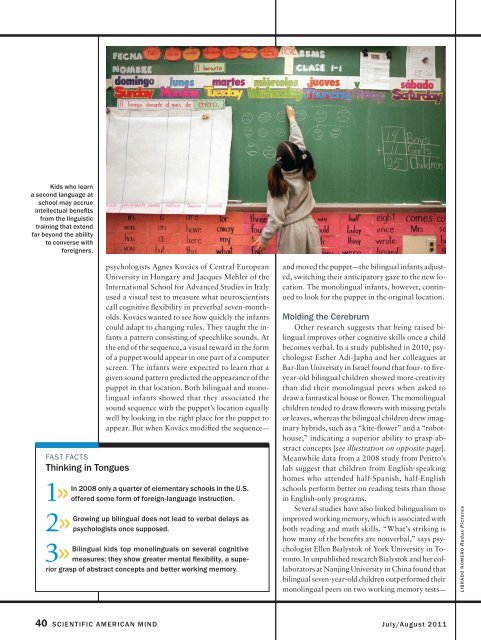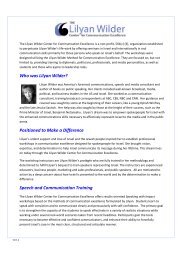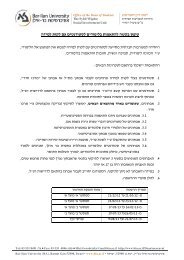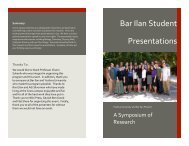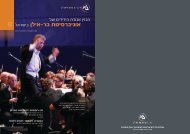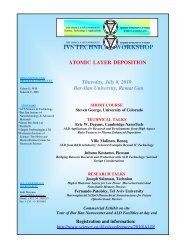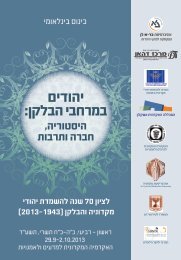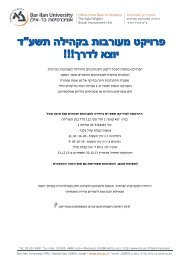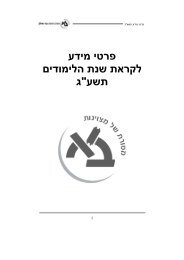The Bilingual Advantage
The Bilingual Advantage
The Bilingual Advantage
Create successful ePaper yourself
Turn your PDF publications into a flip-book with our unique Google optimized e-Paper software.
Kids who learna second language atschool may accrueintellectual benefitsfrom the linguistictraining that extendfar beyond the abilityto converse withforeigners.FAST FACTSThinking in Tongues1>>2>>3>>psychologists Agnes Kovács of Central EuropeanUniversity in Hungary and Jacques Mehler of theInternational School for Advanced Studies in Italyused a visual test to measure what neuroscientistscall cognitive flexibility in preverbal seven-montholds.Kovács wanted to see how quickly the infantscould adapt to changing rules. <strong>The</strong>y taught the infantsa pattern consisting of speechlike sounds. Atthe end of the sequence, a visual reward in the formof a puppet would appear in one part of a computerscreen. <strong>The</strong> infants were expected to learn that agiven sound pattern predicted the appearance of thepuppet in that location. Both bilingual and monolingualinfants showed that they associated thesound sequence with the puppet’s location equallywell by looking in the right place for the puppet toappear. But when Kovács modified the sequence—In 2008 only a quarter of elementary schools in the U.S.offered some form of foreign-language instruction.Growing up bilingual does not lead to verbal delays aspsychologists once supposed.<strong>Bilingual</strong> kids top monolinguals on several cognitivemeasures; they show greater mental flexibility, a superiorgrasp of abstract concepts and better working memory.and moved the puppet—the bilingual infants adjusted,switching their anticipatory gaze to the new location.<strong>The</strong> monolingual infants, however, continuedto look for the puppet in the original location.Molding the CerebrumOther research suggests that being raised bilingualimproves other cognitive skills once a childbecomes verbal. In a study published in 2010, psychologistEsther Adi-Japha and her colleagues atBar-llan University in Israel found that four- to fiveyear-oldbilingual children showed more creativitythan did their monolingual peers when asked todraw a fantastical house or flower. <strong>The</strong> monolingualchildren tended to draw flowers with missing petalsor leaves, whereas the bilingual children drew imaginaryhybrids, such as a “kite-flower” and a “robothouse,”indicating a superior ability to grasp abstractconcepts [see illustration on opposite page].Meanwhile data from a 2008 study from Petitto’slab suggest that children from English-speakinghomes who attended half-Spanish, half-Englishschools perform better on reading tests than thosein English-only programs.Several studies have also linked bilingualism toimproved working memory, which is associated withboth reading and math skills. “What’s striking ishow many of the benefits are nonverbal,” says psychologistEllen Bialystok of York University in Toronto.In unpublished research Bialystok and her collaboratorsat Nanjing University in China found thatbilingual seven-year-old children outperformed theirmonolingual peers on two working memory tests—Librado Romero Redux Pictures40 scientific american mind July/August 2011


